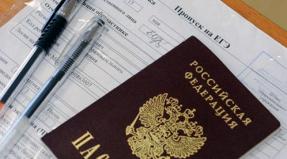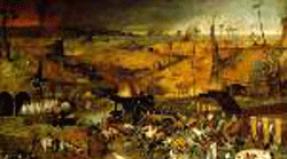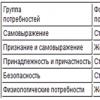Passage rule in chess. Castling, en passant capture, pawn promotion. Some conditions and rules that must be followed
Are you sure you play chess according to modern, official rules?
Look at what misconceptions amateurs have regarding the rules of chess; perhaps they exist in your game too.
White has a queen on the board, but that doesn't stop the pawns from becoming queens.
1) The pawn, when it reaches the last rank, can only transform into a piece that was previously eaten. This misconception has its roots in Italy. It was there that they played by these rules until the 19th century. For example, if only the bishop was eaten, then the pawn can turn exclusively into a bishop, and if all the pieces are intact and on the board, then the pawn remains a pawn on the last rank. In modern rules of chess, a pawn can become any piece, that is, if your 5 pawns reach the end, then you can have at least 5 queens or 5 knights, etc., at your discretion.
2) The chess player persistently moves his king to the last rank of the chessboard because he thinks that by reaching it he will receive a pawn. You can move the king or other pieces on any squares of the board as much as you like, but you do not receive pawns under any circumstances.
3) Many beginners try to put a check on the enemy king at the beginning of the game, thinking that if the check is made, then the king will not be able to castle. But that's not true if the king did not make a move, but simply defended against check, then he retains the right to castling.
4) Children who do not understand the concept of checkmate well simply eat the king and think that they have won the game. They need to explain that you can't eat the king, if he is in check, and the opponent does not see this and makes another move, then his mistake must be corrected. The same applies to moving the king onto a broken square.
 Taking on the pass. Black's pawn moves to 2 squares and White takes this pawn en passant
Taking on the pass. Black's pawn moves to 2 squares and White takes this pawn en passant
5) Most amateurs are not familiar with the rule of taking on the pass, although it appeared back in 1490. What is an en route capture? This is when a pawn moves two squares across a broken square, which is under attack from an opponent’s pawn, and the opponent can take your pawn with his next move. His pawn is moved to the captured square, and your eaten pawn is removed from the board. Capturing en passant is only possible directly in response to a pawn's move across the captured square; on subsequent moves, pawns cannot be captured en passant.
If you have any questions regarding, you can ask your question in the comments, we will definitely answer it.
Sometimes in a chess game surprises happen that are not pleasant. Often these are banal “yawns,” but sometimes disappointment is a consequence of ignorance of the basic rules or their incorrect interpretation. The latter can safely include capturing a pawn on the aisle.
On the other hand, knowing the rules and paying attention to them can bring unexpected points to your treasury.
WHAT IS TAKING ON THE PASSIN CHESS
An en passant capture is a move in which a pawn captures a pawn through a broken square.
If a pawn from its initial position (that is, being on the second or seventh rank) moves to two squares at once and the square through which it jumps is hit by an opponent’s pawn (a beaten square), it can be captured by this opponent’s pawn.
It's probably easier to explain with a picture:

After being captured, the pawn moves to the “captured” square. In this case c3 or f6. But not the one that the beaten pawn went to - c4 or f5.
Now some terms and conditions:
Is it possible to capture other pieces on the pass?
On the pass, it is only allowed to capture a pawn. Also, both the rook and the queen can move onto two squares vertically. So, these pieces cannot be taken on the pass.
Can a piece other than a pawn capture on an en passant?
No, he can not. This exclusive right is granted only to the pawn.
How many times per gamecan I take it on the way?
The opportunity to capture on the pass can only be used in response to the movement of this very pawn. That is, the next move. If the opportunity to take a given pawn on the pass is not immediately used, it is lost.
However, there are eight pawns. That is, in theory, you can take on the passant eight times during the game. Just different pawns.
Beat on the passnot necessary. Moreover, often taking on the pass can be a mistake.
EFFECTIVE DOES NOT MEAN EFFECTIVE
For a beginning chess player, capturing en passant looks impressive. However, let's not forget that this is just a move. By definition, it is no better or worse than other moves. And sometimes it can be a mistake. Just like any other move.

Black made the move 1...d7-d5. White was tempted by the possibility of capturing on the pass:

Now follows 2... Ca7-e3+!

Alas... White loses his rook. The game is lost.
Taking on the pass in this case is a gross mistake. It was possible not to take the pawn, but to play, for example, 2. Rh6-f6, winning the f7 pawn and maintaining the chance of winning.
Remember that in chess, a beautiful or spectacular move is not always the best.
THE PRICE OF INATTENTION
It is important not to forget about the rule of capturing on the pass during the game. Otherwise, you may encounter very unpleasant surprises. Or even commit something absurd that costs the party.

Black played 1... b7-b5+ and... White admitted defeat by stopping the clock. And indeed, checkmate is on the board, what questions?
But there is an important question! After 2.a5:b6, who's checkmated?

Checkmate is already black. These are the metamorphoses with the rule of taking on the pass.
Another example. The lack of composure of one player and the attentiveness of another, who skillfully took advantage of the opportunity that presented itself.

White optimistically moved the pawn two squares, rightly judging that they had time to hold off the black pawn with the king. While the black king cannot keep up with the white pawn.

The black pawn takes the white one on the pass and moves to the queen. White can lay down his arms.
I know from experience that such situations act like a cold shower. Chess can be cruel sometimes.
TASKSFOR PICKUP ON THE Aisle

Black played e7-e5. Can White take a pawn by passing with a bishop?

Black played d6-d5. Can White take a pawn on the aisle?

Black made the move d7-d5. Is a white pawn allowed to capture a black pawn en route?

The black rook moves from e7 to e5. Is it possible to capture a rook with a pawn en passant?
ANSWERS TO PROBLEMS
- Can not. Only a pawn can capture on an aisle
- Can not. The black pawn does not move from the initial position and does not pass through the broken square
- Yes you can
- No you can not. On the aisle you can only capture a pawn
I hope that the rules for capturing on the pass and the description of the situations outlined in this article are clear to you. If you have any questions, you are welcome to use the comments section.
Thank you for your interest in the article.
If you found it useful, please do the following:
- Share with your friends by clicking on the social media buttons.
- Write a comment (at the bottom of the page)
- Subscribe to blog updates (form under the social media buttons) and receive articles in your email.
Have a nice day and chess victories!
Chess chess clock, chessboard, initial arrangement of chess pieces Number of players 2 Age range 5+ Setup time Typically 10 60 seconds Game duration 10 seconds 7 hours * Complexity of rules ... Wikipedia
Chess chess clock, chessboard, initial arrangement of chess pieces Number of players 2 Age range 5+ Setup time Typically 10 60 seconds Game duration 10 seconds 7 hours * Complexity of rules ... Wikipedia
Chess chess clock, chessboard, initial arrangement of chess pieces Number of players 2 Age range 5+ Setup time Typically 10 60 seconds Game duration 10 seconds 7 hours * Complexity of rules ... Wikipedia
This term has other meanings, see Chess (meanings). Chess chess ... Wikipedia
Marseille chess is a variant of chess in which each player moves his pieces twice per move. The rules of the game were first published in 1925 in Marseille in the local newspaper Le Soleil. This variant of chess became very popular in the end... ... Wikipedia
- ... Wikipedia
- # A B C D E E E F G H I K L M N O P R S T U V H C H ... Wikipedia
- # A B C D E E E F G H I K L M N O P R S T U V H C ... Wikipedia
This term has other meanings, see pawn (meanings) ... Wikipedia
Books
- Chess for children. Educational fairy tale in pictures. Federal State Educational Standard, Maria Vladimirovna Fominykh. Maria Fominykh is an international grandmaster, champion of Russia and Europe among girls, author of children's books on chess, coach, organizer of chess tournaments, journalist.... Once upon a time there lived...
- Chess for children. Educational fairy tale in pictures. 3+, Fominykh Maria Vladimirovna. Maria Fominykh is an international grandmaster, Russian and European champion among girls, author of children's books on chess, coach, organizer of chess tournaments, journalist. ...Once upon a time there lived...
Today we’ll talk about the rules of castling, capturing on an aisle, promoting a pawn.
Every chess player encounters these rules more than once during a game.
But let's start in order:
The castling rules were described by me earlier
It is only worth repeating when castling cannot be done:
- The king or rook moved
- Pieces standing between the king or rook interfere
- Shah declared king
- There is a broken field on the king's path
Even the strongest chess players sometimes forget to take on the pass. This unusual move was invented as if to confuse chess players who were already struggling to remember all the rules.
It’s impossible to write much about the promotion of a pawn, but this is definitely the dream of every little infantryman: to go to the end of the board and transform into ANY chess piece except the king. In total, for example, you may have 9 queens, or, for example, 10 rooks, etc.
So, an en passant capture can only be done with a pawn; it’s easier and better to watch a visual video about this:
In chess, a batted square is a square that is under attack by an opponent's piece or pawn. Typically this chess term refers to the rule of "capturing en passant". captured square – a square attacked by a pawn, vertically in front of the opponent’s pawn, which is in the initial position.
Square e3 – captured by the black pawn.
The expression "beaten square" and the rule on the pass came into play in chess in the 15th century, around the same time as another rule according to which the first move of a pawn was allowed to be made two squares forward.
With the additional capabilities of a pawn on the chessboard, the opponent gained the right to capture it when moving a broken square. An en passant capture is an exceptional situation in chess in which a pawn captures the opponent's pawn and does not take its place.
An en passant capture can occur when the white pawn is in the initial position and the black one is on the fourth rank; in another case: black - in the initial position, white - on the fifth horizontal.
It is possible to move a pawn across a broken square, but the rules allow the opponent to take the pawn as if it had moved one square forward.

Black went 1. … d5. Square d6 is beaten, and White can take the black pawn with his next move: 2. ed+.
The opportunity to capture on the pass remains only in response to the move of this very pawn. If the opportunity is not used, it is lost on the next turn.
On the pass, only a pawn is allowed to be captured. The queen and rook can move along the vertical, but they cannot be captured en passant.

Black move 1. ... Rd5. The black rook passed through the d6 square captured by the white pawn, but White has no right to play 2. ed+.
In the opening, the aisle capture is found in a variation of the Russian game.
1. e4 e5 2. Nf3 Nf6 3. d4 ed 4. e5 Ne4 5. Q:d4 d5.

After Black's 5th move, White can play 6. ed.
In the French Defense variant, an en passant capture is possible on the third move: 1. e4 e6 2. e5 d5.

White can play 3.ed
Since each player has eight pawns, it is theoretically possible to capture en passant eight times.
Taking the pass looks impressive, but hitting is not necessary. There are positions where capturing on the pass is a serious mistake.

Black move 1. … e5 2. fe Bd3+ and black wins. The take on the pass turned out to be a grave mistake. Move 2. Ra7 led to a quick victory for White. As Savely Tartakover wittily noted: “Mistakes exist to be made.”
The expression “broken field” also occurs when castling. You cannot castle if the king passes through a broken square during castling.

White's move. 1.0-0. White cannot make a long castling, since the d1 square is under attack by the black queen.

Black's move. They can make a long castling 1. ... 0-0-0. Black cannot castle short, since the f8 square is under attack by the white queen.
An interesting incident occurred in the game between G. Gundersen and A. Faul in 1928.

Black's last move was 14... g5, closing against check. After taking 15. hg on the pass, White declared checkmate with a double check.
In chess problems, capturing en passant was first introduced by the famous compiler Adolf Andersen in 1846. En passant capture is used in retrograde analysis, a genre of chess composition in which to complete a task it is necessary to analyze previous moves of a given position.

Problem of F. Amelung, 1897.
Read also...
- Analysis of the motivation management system in a travel agency Methods of managing staff motivation at tourism enterprises
- Analysis of the ratio of income, expenses and financial results Ratio of profit and expenses
- How to calculate interest (discount) on a bill received
- Czech cuisine. We translate the Czech menu. Traditional Czech dishes Czech cooking


















